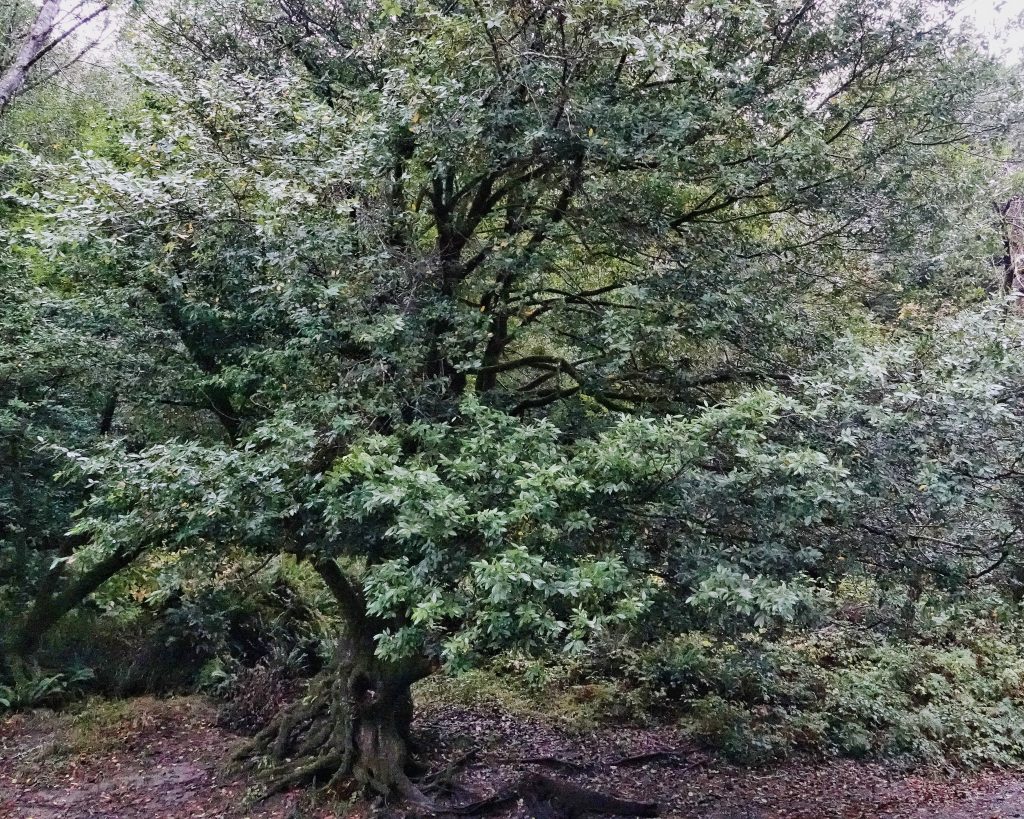
Finding these trees was a prime objective of the coastal part of my recent journey. Going by the common names Oregon myrtle, California laurel, balm of heaven, and California bay (as well as many more), I first read about them when looking into Alfred A Loeb State Park as a place to find redwoods, and it was said there was a grove of old growth Oregon myrtle there. Old growth anything always get my juices flowing, and combined with the accessible presence of redwoods, the Chetco River valley became a must see place for me. And neither the trees or the area disappointed! In fact, as I mentioned in “Pivoting”, this was the only area of the trip where I spent two days.
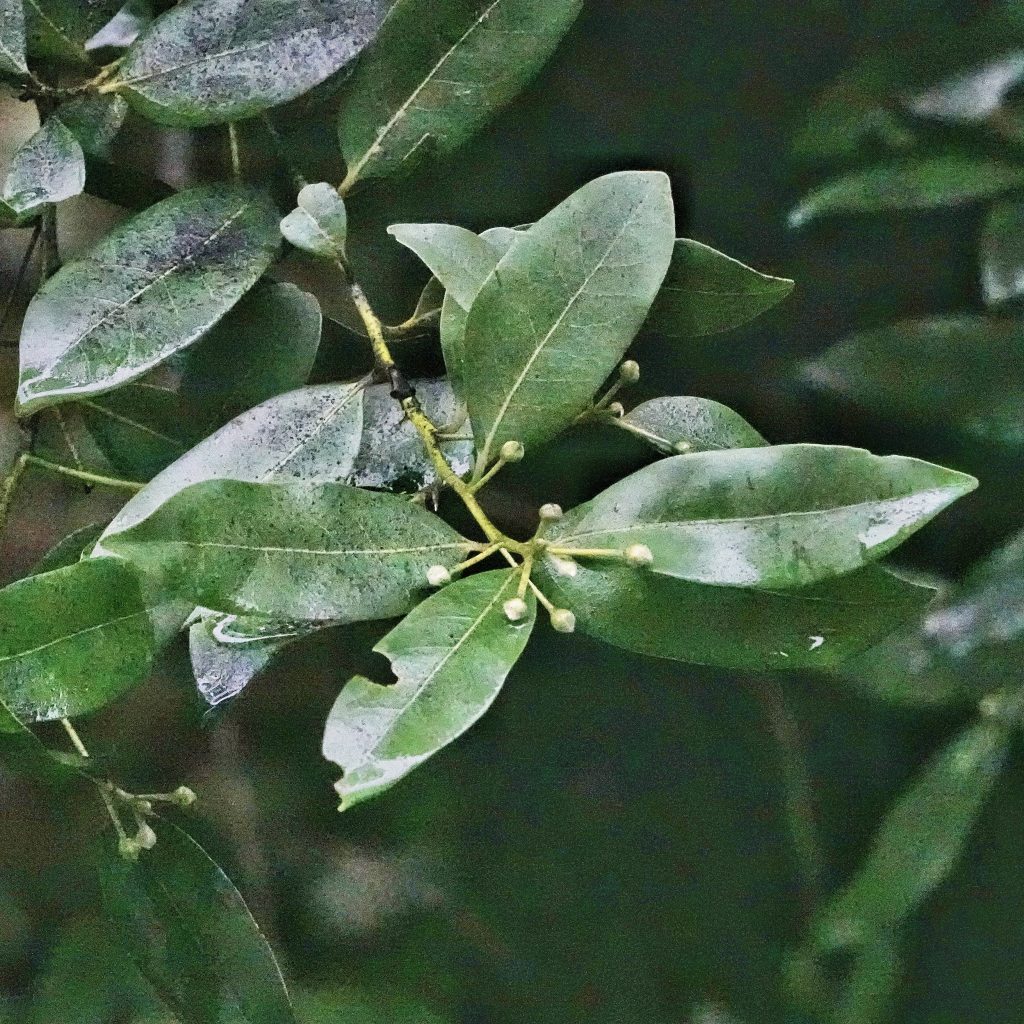
The trees were said to have a pungent odor, variously described as spicy, or like camphor, and as I drove up the river in the dark I became aware that the air was perfumed by an intriguing smell. When I got to my campsite at Miller Bar I was able to confirm that it emanated from the abundant Oregon myrtle. The odor comes from the chemical umbellulone, which derives its name from the scientific name for this monotypic genus in the laurel family (Lauraceae). I found it to be a pleasant smell, but the chemical can induce headaches in people (another common name is headache tree) and at higher dosages can be quite toxic, because it renders red blood cells less able to bind with, or to release, oxygen.
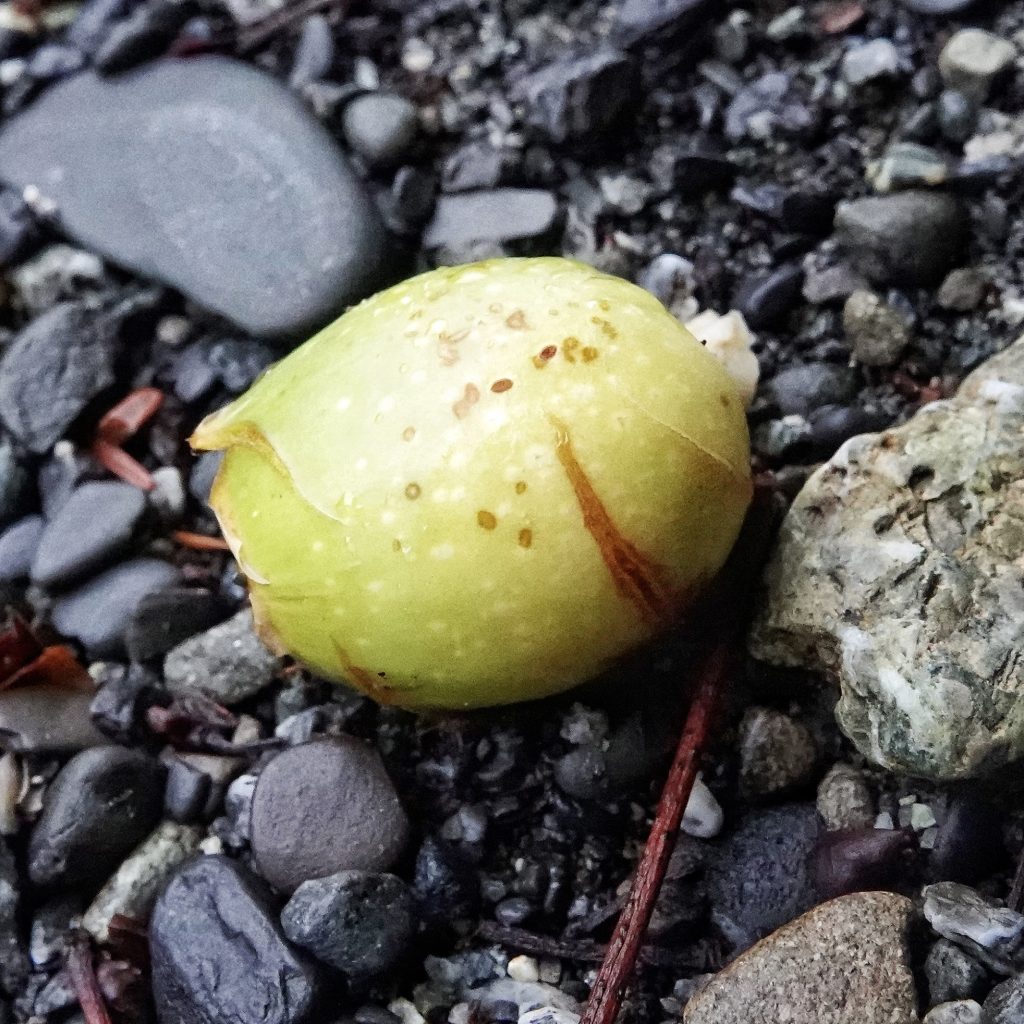
Native Oregon Myrtle are seldom found far inland, though there are some in the western foothills of the Sierras that are 150 miles from saltwater. But the native populations are usually found within 70 miles of the coast, and only reach as far north as the Umpqua River valley (ETA-A reader, Jason Clinch, says that he has seen them another 20 miles north, around Florence, and upstream along the Siuslaw River). This species appears to be at least moderately allelopathic, and often has large bare patches on the ground under its canopy. Tests with leaf and litter extracts have shown they have the capacity to inhibit germination of a variety of different trees and plants. It is shade tolerant, and is a common understory tree in conifer forests. Because it has thin bark it is vulnerable to fire, but tends to regenerate quickly, either sprouting from undamaged roots or germinating from the seed bank. Some Umbellularia californica have been known to live over 500 years. For a fuller picture of their ecology see William Stein’s treatment in Sylvics of North America.
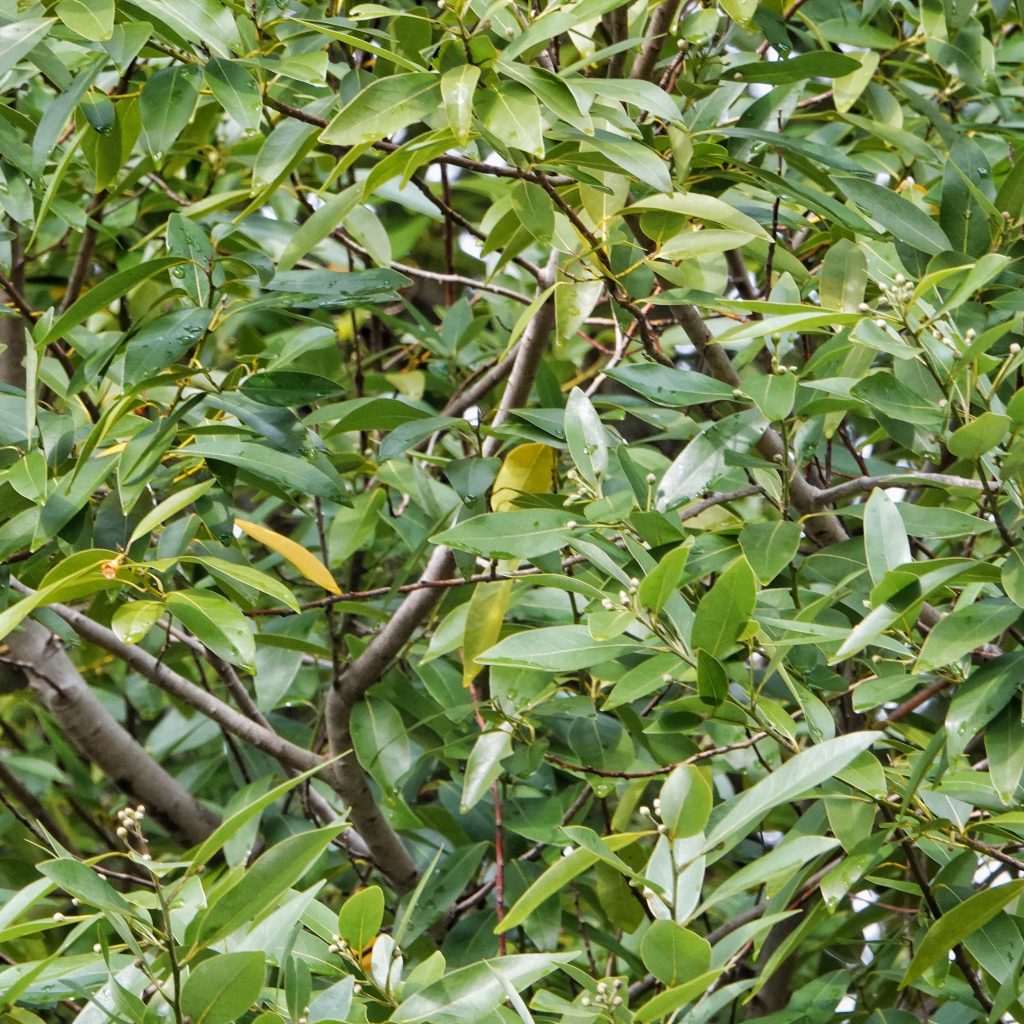
Myrtlewood is a heavy, fine-grained wood, and is highly sought after for machining into bowls, spoons, gunstocks, moldings, and paneling, with up to 4 million board feet a year being milled. Indigenous peoples utilized the tree as a food source, eating the seeds after roasting them, or grinding them into flour and meal, and the fruits were boiled or dried or eaten raw. They also had many medicinal uses for Oregon myrtle, including using decoctions of the leaves for intestinal problems, colds, and as an analgesic. Oddly, since the odor is known to cause headaches, a decoction of the leaves was also used to treat headaches. The smoke from burning leaves, and the leaves themselves, were also used as insect repellent in the dwelling and on the person. For a more comprehensive list of the uses to which this plant was put, see the 64 entries in the Native American Ethnobotany Database.
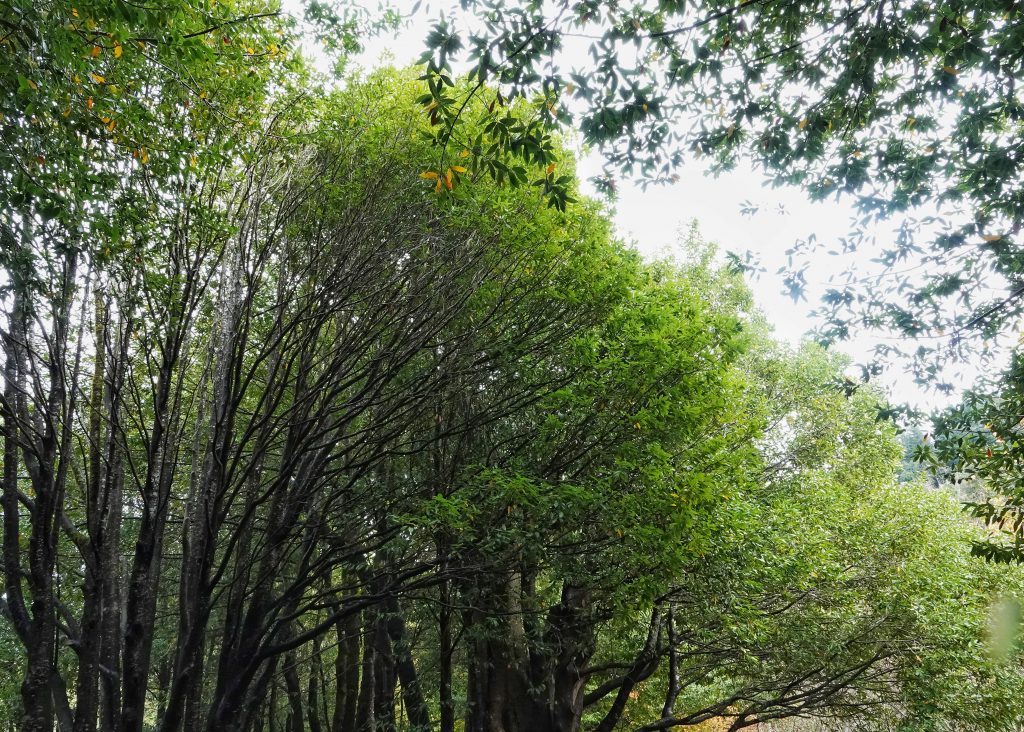
I walked through the grove of old growth Oregon Myrtle in Loeb SP, but because of the asphalt and trailers it wasn’t as impressive as the stands at Miller Bar. Those trees, some with massive boles and most with gnarled limbs, and exposed roots that had dealt with many a flood from the Chetco, embodied perseverance. They also hosted impressive amounts of mosses, and every time I examined one by headlamp I found beetles and slugs and spiders crawling about in search of mates or sustenance. Truly a great tree, and I’m so glad I was able to experience them firsthand.
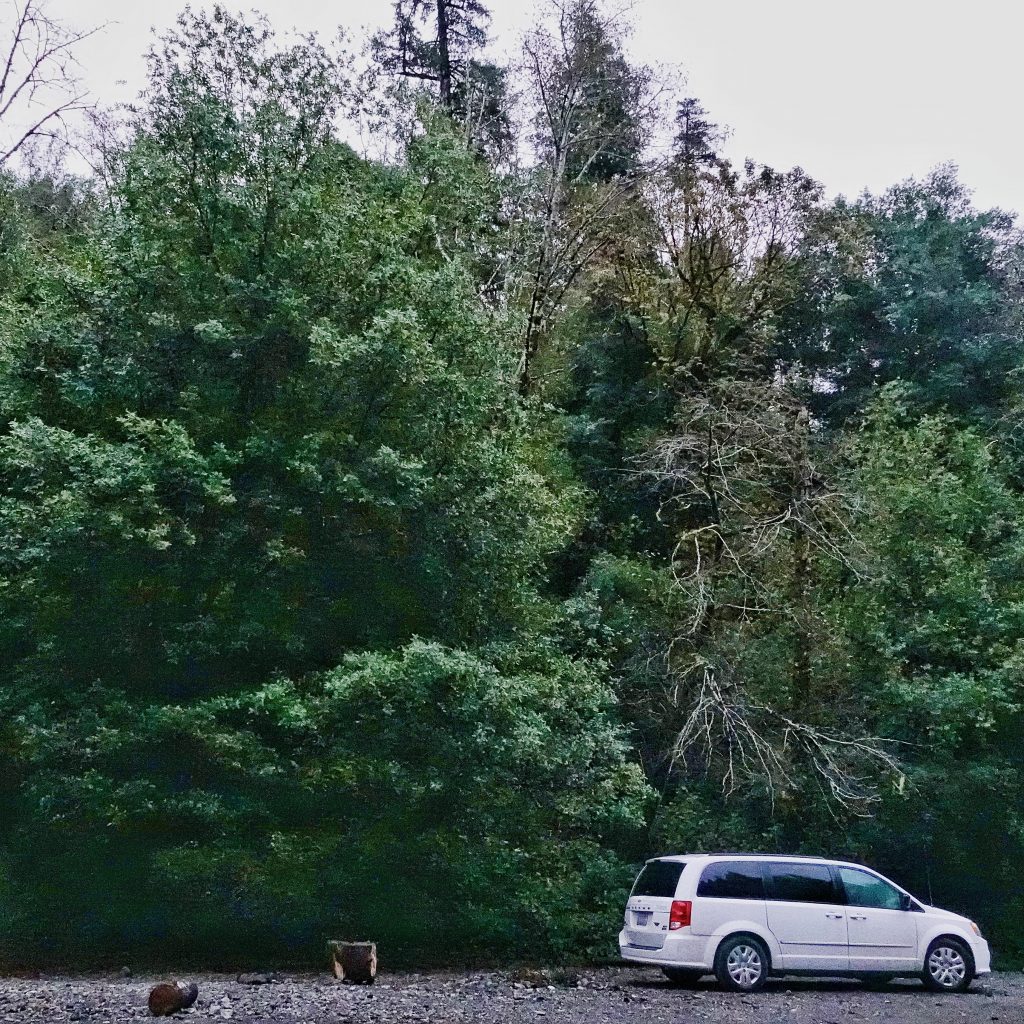
Description-May be anything from a mat to a shrub to an 80’ tall tree; leaves are evergreen, 1-4” long, shiny, dark green, alternating, oblong to lanceolate, with smooth margins and pointed tips; flowers in small, greenish umbels emanating from the leaf axils; fruits smooth, bright green, about an inch long;
Similar species-Could possibly be confused with a willow or rhododendron, but nothing else in our region has the camphor-like smell of the crushed leaves.
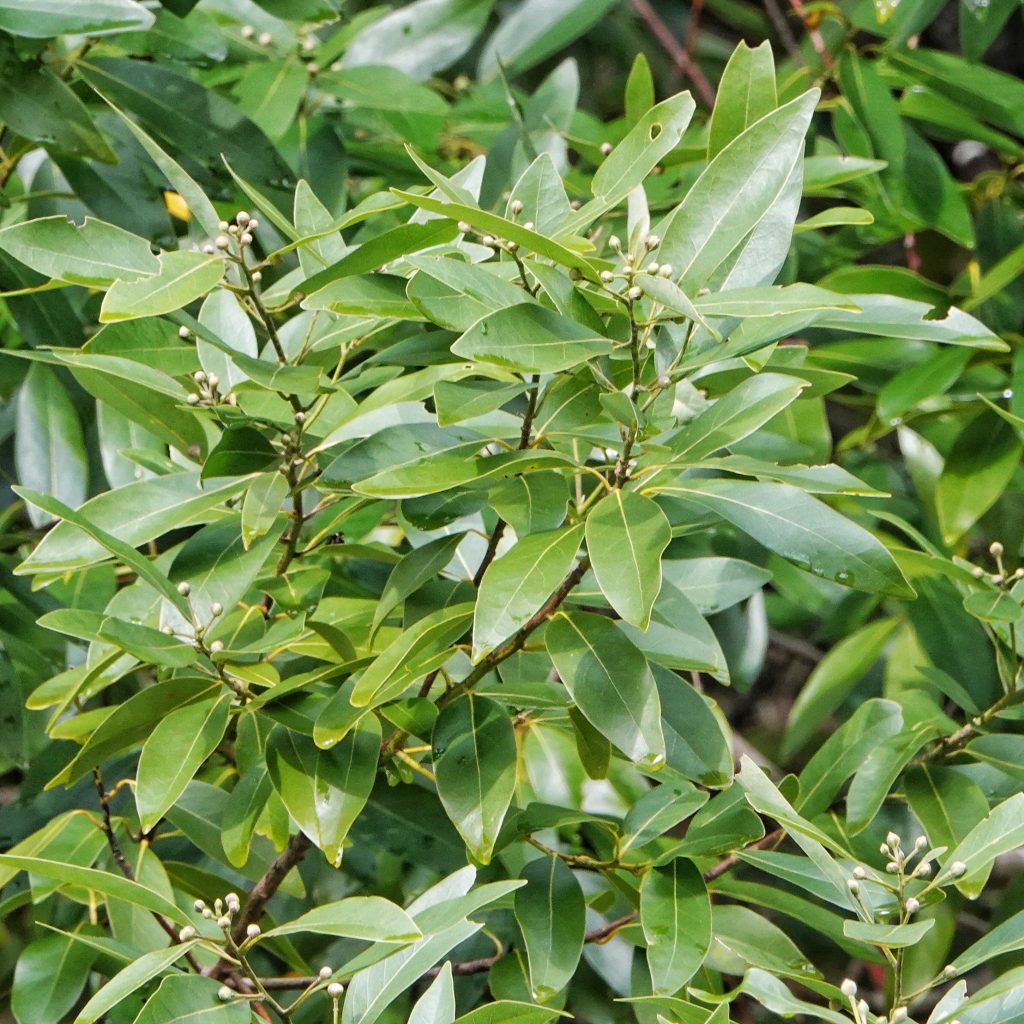
Habitat-moist to mesic mixed forests and deciduous woodlands, up to 4,000’ elevation.
Range-Along the entire coastline of California and southern Oregon, and inland in the Siskiyou and Klamath mountains in our region, as well as through the Coast Range to the foothills of the Cascades; endemic to this region, and not known to naturally grow wild north of the Siuslaw River valley, but some have escaped from cultivation in the northern Willamette Valley, and around Puget Sound, and it is sometimes planted in parks as an ornamental.
Reproductive timing– Winter blooming tree, with flowers from November to May; fruits ripen and fall in autumn.
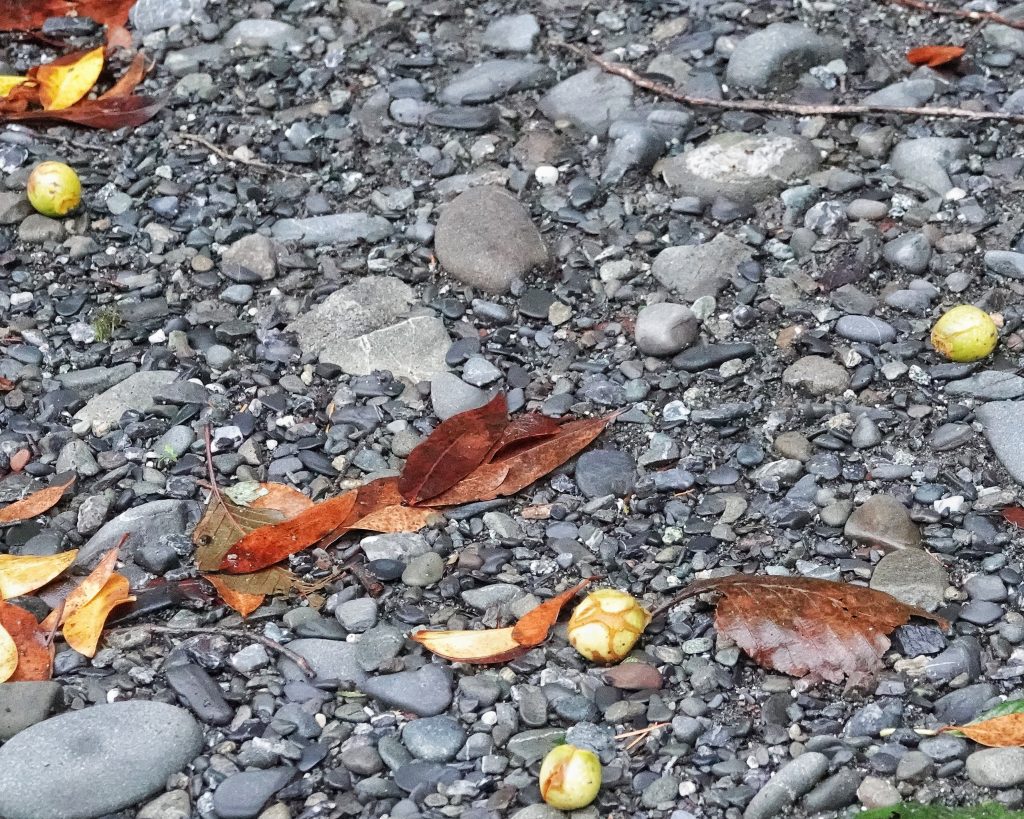
Eaten by-Adults and larvae of the scarab beetle Dichelonyx valida, and the thrips Thrips madronii, feed on the leaves; the scale insect Icerya purchasi may infest these trees; larval host for the butterflies Two-tailed Swallowtail and Echo Azure, and the moths Neoalcis californiaria, Sabulodes aegrotata, Amorbia cuneanum, and Argyrotaenia franciscana, as well as the leaf mining moth Cameraria umbellulariae and those in the genera Marmara and Caloptilia; deer browse the leaves and seedlings (mostly in the spring when the umbellulone levels are at their lowest), and squirrels, Steller’s jays, and other birds and small mammals eat the fruit; larvae of powderpost beetles, oak bark beetles, and the longhorn beetles Enoploderes vitticollis, Holopleura marginata, Leptalia macilenta, Paranoplium gracile, Pidonia scripta, Rosalia funebris, Synaphaeta guexi, and Xestoleptura crassipes feed on dying and dead trees.
Etymology of names–Umbellularia is from the Latin word for ‘umbrella’, and refers to the umbels of flowers it produces. The specific epithet californica refers to the location of the type specimen.
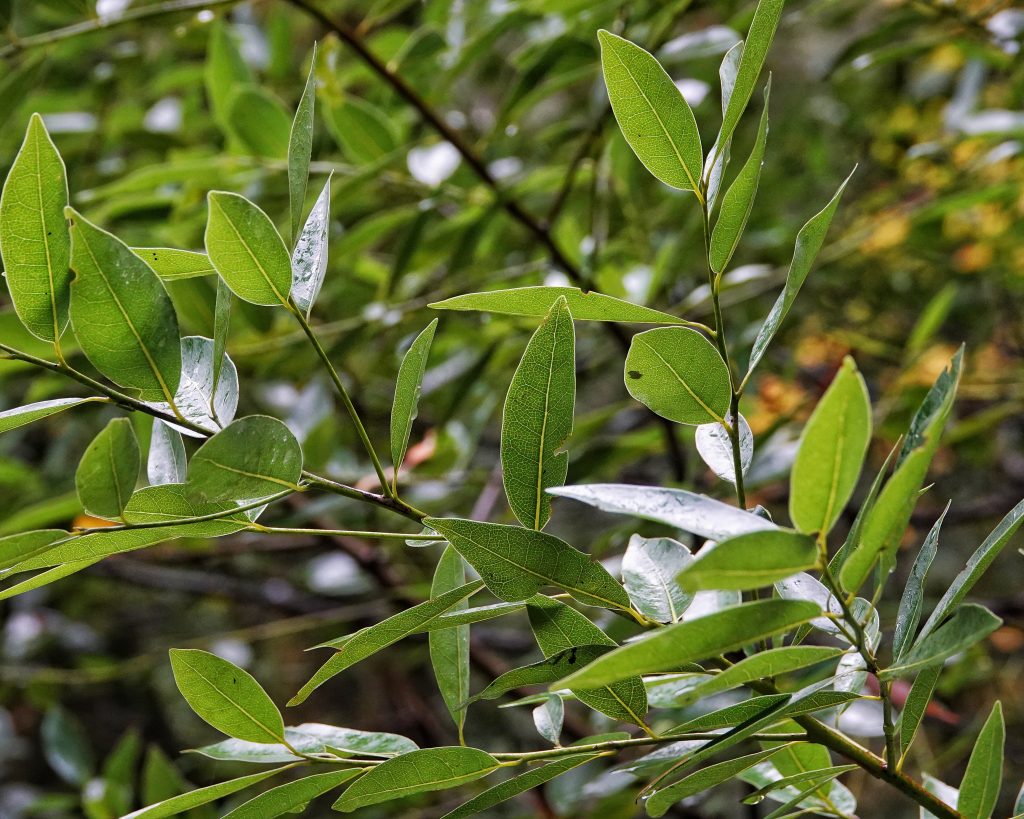
https://www.srs.fs.usda.gov/pubs/misc/ag_654/volume_2/silvics_v2.pdf#page1578
https://www.oregonencyclopedia.org/articles/myrtlewood/#.Y3ae-feIa_Y
https://www.treegirl.org/california-bay-laurel.html
https://plants.ces.ncsu.edu/plants/umbellularia-californica/
BRIT – Native American Ethnobotany Database
https://pfaf.org/user/Plant.aspx?LatinName=Umbellularia+californica
https://www.nwf.org/Educational-Resources/Wildlife-Guide/Plants-and-Fungi/California-Bay-Laurel
https://www.fs.usda.gov/database/feis/plants/tree/umbcal/all.html
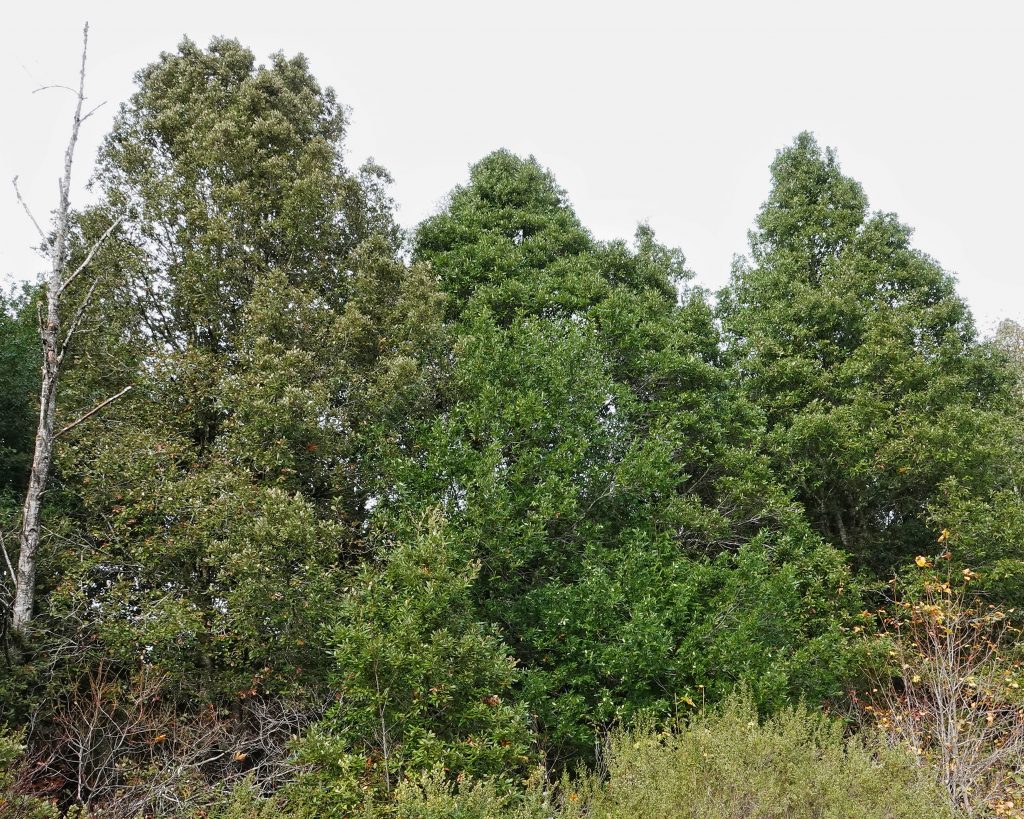
Just another amazing post. You have become my go to for learning about the environs in which I live. Thank you for your curiosity, your passion for exploring it with such richness and depth, and sharing what you discover with all of us.
Thank you so much for your kind words and appreciation, Julie!
Love those photos. I had no idea they could be so tall!
Hi Dan, another great write-up. We have several of these trees that we planted over forty years ago as seedlings on our property in the Columbia River Gorge at the 1,000′ elevation in Skamania County, WA. They are doing quite well, and we now have seedlings coming up from them.
Hi Dan, another great write-up. On our property in the Columbia River Gorge at the 1,000′ elevation in Skamania County, WA. we have several Bay Laurel trees that we planted over forty years ago as seedlings. They are doing quite well, and we now have seedlings coming up from them.
Cool! I’ve seen several places now that shows they do well in our area. So well in fact that I’m a little surprised that their historic range ends so far south of us. Do they attract a lot of attention from the wildlife? Thanks for the kudos and the information, Wilson.
In the 2 Coos languages (hanis & miluk) the trees are called wegenɬ and the nuts are shichils. The nuts are a traditional food-they have to be roasted-they have an interesting flavor rather like coffee and chocolate
Thanks for telling us the names, Phillips!
Great information. Wood rats are known to take leaves into their nests to repels ticks and mites.
Thanks, Julia! I saw that, and meant to mention it, but it got lost in all of the other information. I appreciate you bringing it up!
I always appreciate your species profiles! Thanks for sharing them!
I wanted to note that I’ve seen naturally occurring Umbellularia californica as far north as Florence, Oregon along the coast and also slightly up the Siuslaw River from Florence. Oregon Flora shows a bunch of specimens throughout the Willamette Valley but I’m thinking those are probably all planted/cultivated.
Cheers!
Thanks Jason! I updated the profile with that information. As far as the Willamette populations, the consensus seems to be that they are a combination of planted trees, and their offspring. Glad to hear you like the profiles. Thanks for your appreciation!
I imagine that you are aware that there are some nice specimens in the Washington Park Arboretum in Seattle, where I first learned of the tree and read about it in Kruckeberg. I have four or five growing in my yard in North Seattle and though not large they seem to be happy enough to produce some progeny.
Thanks much for your rich and informative and delightful articles!
I wasn’t aware of that, Brooke, but I know they are a popular arboretum tree. Glad the ones in your yard are doing well! Thanks for your kind words on my profiles. I’m glad you enjoy them
I’m one of those who don’t particularly like the smell of the crushed leaves as it makes a little nauseous, bordering on migraine territory. Despite that, I have two in my yard. I would be curious to try the roasted nuts. But, after reading about the toxicity, I think I will pass. Overall, a really nice, native tree